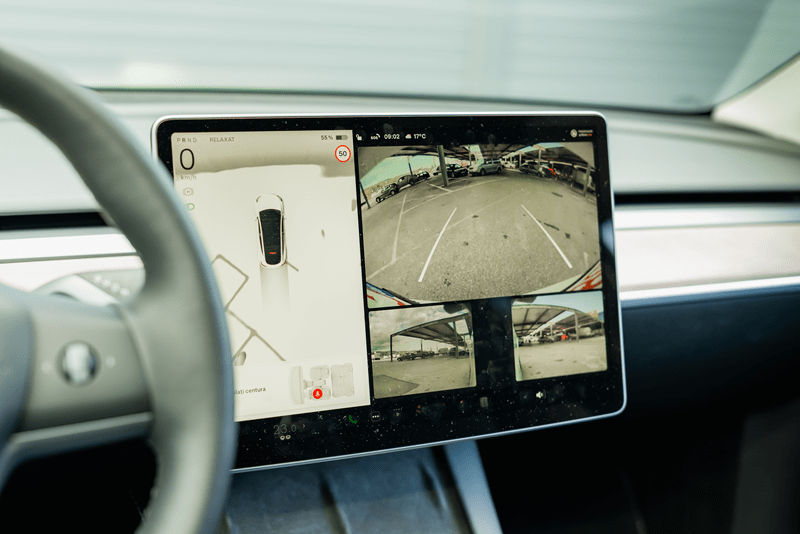Latest Car Safety Regulations Every Buyer Should Know

The issue of safety is one of the biggest when you purchase a new car. Whether it is faster highways or urban roads, all drivers around the world desire a car that can protect them and their loved ones. However, cars are no longer all about seat belts and airbags due to the fast development of technology and the changes in federal regulations. This is the latest rule which have changed the auto industry in the U.S. in this blog. We will dissect the history of crash-test standards and ADAS systems and how these systems have worked to prevent accidents, as well as the automotive compliance that makes all cars on the road constructed to safeguard you. We shall consider the specifications of how these updates can ensure that driving in 2025 will be safer than it has ever been before.
Understanding The Latest Car Safety Regulations
Car safety regulations are those laws and guidelines that motor companies should observe so that their cars can be safe for their users, passengers, and even pedestrians. These regulations are issued by agencies such as the National Highway Traffic Safety Administration (NHTSA) and other federal safety boards.
They include such aspects as the way a car acts during a crash test, and how high-tech solutions will help to avoid accidents altogether. It is easy to understand: all cars sold in the U.S. are required to comply with high safety standards that will result in minimal risk of death or severe injury in case of an accident.
Crash-Test Standards And How They Keep You Safe
The modern car safety regulation is centered around crash-test standards. These are what are termed as real-life tests, which involve head-on collisions, side impact tests, and rollover tests, which are conducted to test the capability of the vehicle in protecting the occupants.
By passing these tests, it would imply that the manufacturer has qualified for some of the federal policies that demonstrate that the car is capable of withstanding a substantial impact. These crash tests do not come to show- they are literally lifesaving tests which assist car producers to point out flawed areas, and enhance vehicle safety, before it gets to your garage driveway.
Types Of Crash Tests
Several different crash tests are conducted before a car gets approved for sale.
- Frontal Impact Test: Measures how the front of the car absorbs energy during a head-on crash.
- Side Impact Test: Evaluates the strength of doors and side panels during a collision from the side.
- Rollover Resistance Test: Checks how stable a car is when it makes sharp turns or hits uneven surfaces.
Together, these tests ensure that no matter the accident type, your vehicle gives you the best possible protection.
Crash Ratings Matter
Every car receives a safety rating—often displayed as stars—from organizations like NHTSA or the Insurance Institute for Highway Safety (IIHS). A five-star rating usually means excellent protection in most crash scenarios.
When you’re shopping for a new car, it’s smart to check these crash-test ratings. A higher score doesn’t just mean peace of mind; it can also lead to lower insurance costs and better resale value.

The Rise Of ADAS Systems In Modern Vehicles
ADAS stands for Advanced Driver Assistance Systems, and they represent one of the biggest leaps forward in automotive safety. These systems use sensors, cameras, and radar to detect dangers before they become accidents.
In many new cars, ADAS features come standard, making them a key part of modern car safety regulations. These systems help reduce human error—the main cause of most road accidents.
Examples Of ADAS Features
Here are some of the most common systems you’ll find in today’s vehicles:
- Automatic Emergency Braking (AEB): Detects potential collisions and applies brakes automatically.
- Lane Departure Warning (LDW): Alerts you when your car starts drifting out of its lane.
- Adaptive Cruise Control (ACC): Maintains a safe distance from the vehicle ahead.
- Blind Spot Detection: Warns you when a car is in your blind spot.
- Pedestrian Detection: Uses sensors to spot people crossing the road, especially in low light.
These features make driving safer and less stressful—especially for families, new drivers, and commuters who spend hours on the road daily.
How ADAS Affects Car Safety Regulations
Because ADAS has proven to prevent crashes, new regulations increasingly require automakers to include these systems in all new models. In fact, the U.S. Department of Transportation has announced plans to make certain ADAS features mandatory, such as automatic emergency braking, across all passenger vehicles.
Automotive Compliance And Why It Matters
Automotive compliance refers to the process by which automakers meet government safety standards. Before any car hits the market, manufacturers must prove that their designs and components meet strict guidelines set by federal agencies.
Recalls And Compliance Checks
In case the car fails to satisfy these standards, the manufacturer should recall it. Recalls are not always negative; they demonstrate that cars are actively monitored by auto manufacturers and the authorities when the cars are already on the road.
If you are ever issued a recall notice, then it is important to ensure that it is fixed immediately. The number of safety recalls that are free of charge is huge, and it may potentially help to avoid severe threats, like some airbag malfunctions or braking mistakes.
How Buyers Benefit From Compliance
To the buyers, automotive compliance offers confidence. You are sure that your car will comply with all the laws of national safety and that it has undergone a high level of testing. It is also useful in standardizing safety tools provided by brands so that even low-cost vehicles will be good from a safety point of view.
Airbags have been saving lives over the decades, but with the current regulations, the design has been taken to a different level. Today's cars are equipped with several airbags, not only for the driver and the passenger but also for the sides, knees, and even back seats.
These airbags have been constructed to deploy in milliseconds to provide a cushion between the passengers and hard surfaces in case of a crash. They are used with seat belts to reduce injuries.
Regulations On Airbags
The US regulations mandate the installation of front airbags in all new vehicles. However, with the advancement in technologies, rules are being broadened to accommodate side-curtain airbags and knee airbags. Automakers should also make sure that airbags do not deploy in case of an accident, and ensure that the volume of the passenger compartment is sufficient.
There are now systems where the sensor of the position that a person has sat on is used and the airbags are inflated accordingly to avoid avoidable injuries.
Conclusion
A modern-day car purchase is no longer just about the horsepower or the color. Your first thought would always be safety, and by being aware of the new safety rules in car safety, you will be able to make an informed decision. When you choose a car that passes the modern crash-test standards, has the systems of the driving aid, and meets the federal safety regulations, you are paying for more than just convenience; you are spending on your own and your family's safety.
This content was created by AI

